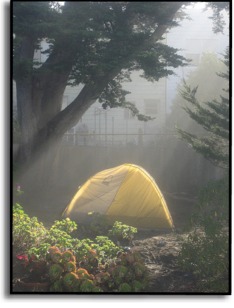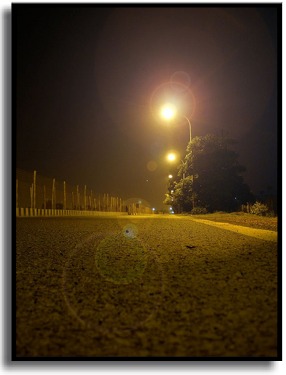Posted by Nicky Drayden on Aug 8, 2010 in
Reviews Author Website: http://www.inkfuscate.com/
Published by: Fantasy Magazine, August 2nd, 2010
 Photo by Jurvetson Creative Commons
Photo by Jurvetson Creative Commons
The Story:
Jacinta has spent her days working in the cocoa groves of Venezuela since she was a child, collecting the beetles that hatch from the trees and slicing off their legs and proboscises with a little knife attached to her thumb. The lifeless beetles resemble beans, and the world is not ready or willing to think otherwise. There was a time when the children would go out and race beetles in the evenings as their parents got drunk on the black, blood wine of their harvests. But those times are gone now. There are no children being born in the Shining City anymore. The women only give birth to dull, lifeless stones, and life is changing all around them.
The Craft: 20 Master Plot – Metamorphosis
SPOILERS
This is such a lovely metamorphosis story since there are so many levels of change. Life and death, childhood to adulthood, stone to stem to bone to stone. But the cycle is broken, and Jacinta is worried about her future and that of the Shining City. With no children being born, there will soon be no one left to harvest the beetles. Already there are no nimble-bodied little ones to pick up the cocoa beetles that have slipped to the ground.
Jacinta gave birth to a stone once, and not even a pretty one. Now, this world of hers is falling apart — dogs are giving birth to gemstones and caterpillars fall to the earth and become seeds. Jacinta gets it fixed in her mind that she wants to become a mother again, and since none of the men she knows would curse her with the pain of bearing another stone child, she goes into the city and tricks a man into impregnating her. Again she goes through the metamorphosis of motherhood, bearing a stone, but it is her stone, her child, her love, and her emotional journey is fulfilled.
There’s so much awesome in this story, I don’t even know where to start. The writing was superb, and the story sucked me in with its inventiveness and fully fleshed out world. The characters had depth, and I could easily feel for Jacinta’s plight. It’s simply a beautiful story, beautifully executed.
Tags: fantasy, Fantasy Mag, literary, master plots, motherhood, must read
Posted by Nicky Drayden on Aug 3, 2010 in
Reviews Published by: Fantasy Magazine, July 19th, 2010
 Photo by Keven Krejci Creative Commons
Photo by Keven Krejci Creative Commons
The Story:
A woman who’s good at losing things runs out of sugar while baking a cake for her sister’s birthday. She’s determined to find some, so she sets off shoeless and with a measuring cup in hand, asking neighbor after neighbor until she comes to the house of an old woman with a giant, bleeding heart in her backyard.
The Craft: 20 Master Plots – The Quest
SPOILERS
I almost skipped over this story, because after reading the first couple paragraphs, I was thinking “how interesting could a story be about a woman who goes on a quest to find a cup of sugar?” Well, the answer is very. Typical of Quest plots, this story starts off with the character at home. She’s forced to venture outside out of the necessity of finishing a birthday cake for her sister — her sister’s first birthday since being dead. So her quest is more than just about the sugar, but it’s an emotional quest to deal with the loss of her sister, as well.
She hits up neighbor after neighbor, but no one seems to have the sugar she’s looking for. Finally, she’s sent to Miss Harriet’s house, an older woman who’s lonely, and stalls while finding the sugar just to have company a little longer. Right as the main character starts to contemplate stealing the sugar bowl sitting so obviously on the counter, Miss Harriet asks her if she’s come for the heart. Out in her backyard sits a giant bleeding heart that fills the sky. The character climbs up and into it, pushing through tight flesh and bloody viscera, searching for the heart’s center. Her quest for sugar quickly is replaced by the physical manifestation of her own broken heart and her need to deal with the loss of her sister.
This story is a very touching one, one with great details, descriptions, and high emotional stakes. Halfway through, I went from leaned back in my chair, to sitting with my nose inches from my screen. (I love when a story makes me do that!) The ending has wonderful imagery of the center of the heart being like a child’s tent, a safe place that reminds the main character of all those times spent with her sister in small, intimate spaces — blanket forts in sunny rooms and reading fashion magazines under the covers with flashlights. We feel her heartache and understand her decisions, and I’m glad I kept reading what started off as a simple quest for sugar.
Tags: Fantasy Mag, literary, master plots
Posted by Nicky Drayden on Apr 12, 2010 in
Reviews Published by: Chizine, 2010
 Photo by Dipanker Dutta Creative Commons
Photo by Dipanker Dutta Creative Commons
The Story:
There was a time, not long ago, when humans ruled the Earth. But all that’s disappeared, along with those people who didn’t accept their new lot in life and went out looking for answers, never to be seen again. The night rules now, and the dark will get you if you aren’t careful. The night never comes into houses though, so people huddle together, cramming into living rooms, bedrooms, wherever there’s space. Windows are papered shut so the darkness won’t seep inside. There’s some semblance of safety in the light, and for two young women, the thrill of venturing out past curfew, jumping between the pools of yellow light cast by streetlamps is too much to resist.
The Craft: World Building
SPOILERS
The Year of the Rabbit is an interesting example of world building, because the world is not built with description but with fear and the characters’ reaction to fear. The story starts with streetlamps, or more importantly, the light they emit at night, keeping the dark away. We quickly learn that the night is not safe. The reader doesn’t get a clear sense of what’s going on in the opening scene, but we do know that we should be afraid. The word cues are subtle, but there: “drowning in the dark”, “lights started dying”, “illusion of safety”, “swarming ocean of black”. It’s clear these characters have diverged from our world and have journeyed into one of their own.
In the next few scenes, we get a sense of what life is like for these people now that humanity has been thrown from the driver’s seat. No longer in control, they hide from the night, drawing strength in numbers, and using each other for warmth in the winter months. The electricity and water are gone, but they make do. And curiously, there’s always food waiting for them, though no one tends the store. No one asks where the food is coming from. Curiosity is what’ll get you snatched up by the night, like all those others who went searching for answers and never came back. There’s something otherworldly going on here, and just when the reader is starting to get uncomfortable, the author strikes at our childhood fears:
“Night never came into the houses. It was the same way that kids’ monsters never crawled under their blankets and never reached over the side of their beds.”
The world expands some in the following scenes, and we get a glimpse of the park and the city and the streets. The park is so full of light, that even the shadows look friendly, but by now, the reader knows better. The city has been picked clean, wooden garages torn down for firewood, abandoned houses scavenged for blankets and food. And the streets are dark and too quiet, with streetlamps flickering in and out like the dark is trying to catch you.
Year of the Rabbit tempts the reader to dangle her feet into the mysterious shadows, and the thrill of the story is well worth it. Wonderfully written, intriguing, and poignant, this story will take you to another world constructed from the fear within.
Tags: Chizine, dark, literary, world building
 Photo by Jurvetson Creative Commons
Photo by Jurvetson Creative Commons

